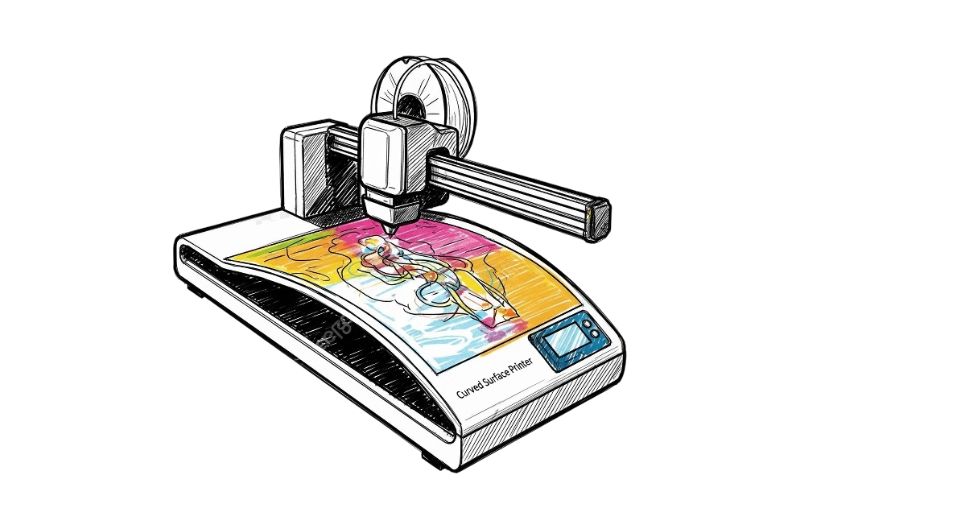
Jul 01, 2025

The new report analyzing the Global Curved Surface Printer market, as initiated by Metastat Insight, captures an exclusive insight into a niche that merges accuracy engineering with artistic freedom. This print segment is concerned with technology aimed at placing designs, logos, or text on three-dimensional entities that do not follow planar surfaces. Unlike conventional techniques, such systems allow manufacturers and designers to add personalized or functional content to intricate shapes helmets, bottles, containers, and others without sacrificing the print's durability or readability. The degree of accuracy needed and the flexibility of these machines have enabled them to become applicable in a broad range of specialized production environments.
Global Curved Surface Printer market is estimated to reach $1,592.7 million in 2025 with a CAGR of 11.3% from 2025 to 2032.
As customizability becomes a norm in consumer products and industrial identification, companies across industries are seeking to venture into sophisticated geometries. This has created a need for printing that is not constrained by flatness of surface. Equipment in this category has evolved to meet that need, and now their presence is found in industries as diverse as promotional items, food wraps, consumer electronics, and sporting equipment. What distinguishes these systems is their capacity to be used seamlessly in computerized production lines and yet offer the flexibility to make adjustments for shape, size, and texture. The control mechanisms of precision that they use guarantee not only print alignment but also preservation of design integrity over various materials ranging from plastics to metals and ceramics.
Product developers and designers, particularly those in competitive markets, frequently look for means to differentiate their products physically. The use of logos or product-specific information on curved items without a sticker or label has emerged as an innovative and practical solution. Under these circumstances, the curved surface printers come in as not only tools but also partners in the branding and designing process. The technology has also evolved to accommodate complex graphical output, fast production, and ink stickiness on diverse surfaces features that collectively solidify its position in contemporary production lines.
The versatility of these machines enables them to match the fast-evolving nature of product design. Both for short-run promotional programs and massive packaging requirements, curved surface printers are frequently customized for both functions. The versions available range from modular pieces that may be regulated according to the project, to fully custom-made equipment catered to the particular needs of industries. With increasing complexity in the production arena, the role of such machinery has evolved from mere utility to becoming a force behind design efficiency and brand differentiation.
One of the lesser-known aspects of such equipment is the potential to reduce waste and make labeling more sustainable. Without the necessity of adhesive labels or individual packaging parts, manufacturers can minimize material and process time. Not only does this optimize manufacturing, but it also appeals to industries that focus on environmentally conscious practices. In addition, some of the technologies in this area have begun incorporating UV-curable inks, which provide higher durability and do away with heat-drying methods, hence energy savings in high-output situations.
Although emphasis frequently falls on their industrial application, these printers have also been utilized for small-scale creative businesses. Boutique-specific printing for unique items, art pieces, or limited runs of merchandise has taken hold, and curved surface printers are filling a supporting role in bridging the gap between artisanal intention and high-precision capability. This democratization of industrial-scale printing technology underscores the change in how equipment such as this is not only confined to factory floors anymore but is also facilitating entrepreneurial ingenuity at smaller scale.
What does not change across uses is the inherent demand for reliability, reproducibility, and quality of output. Curved surface printing as a technique leaves little margin for error because of the three-dimensional substrates involved. In contrast to flat printing, where registration is easy, printing on objects with curves requires a great level of hardware calibration and software accuracy coordination. Consequently, the machines presently being embraced are made not just with mechanical agility but also with advanced interfaces through which operators can make adjustments to parameters for every specific application.
The terrain of this segment still showcases a hybrid mix of function and form. Whether facilitating brand identity on cylindrical water bottles or functional insignia on medical equipment, the accuracy delivered by this class of printers is increasingly affecting the way manufacturers view design and production integration. Speed, reliability, and visual presence are now the cornerstones of value in this space, and the technology keeps moving in step with those demands.
In highlighting the existing breadth of the Global Curved Surface Printer market, as defined by Metastat Insight, it is evident that this is not so much a niche technology but an expanding industry addressing contemporary production needs. Its ongoing streamlining indicates a future where printing is not defined by shape but characterized by versatility, where brands and makers can express, recognize, and create with increasing assurance.
Drop us an email at:
Call us on:
+1 214 613 5758
+91 73850 57479